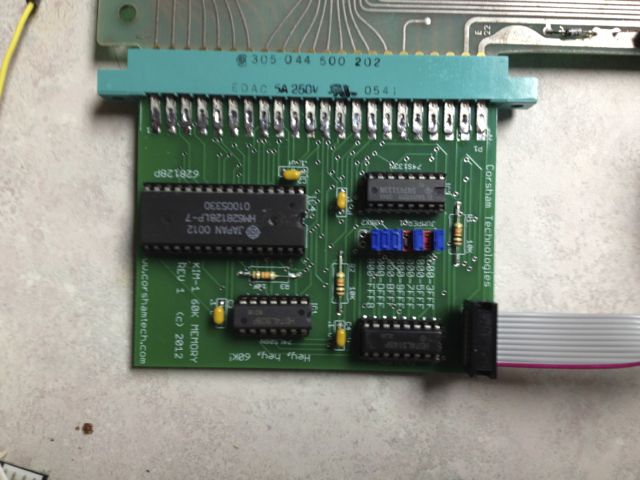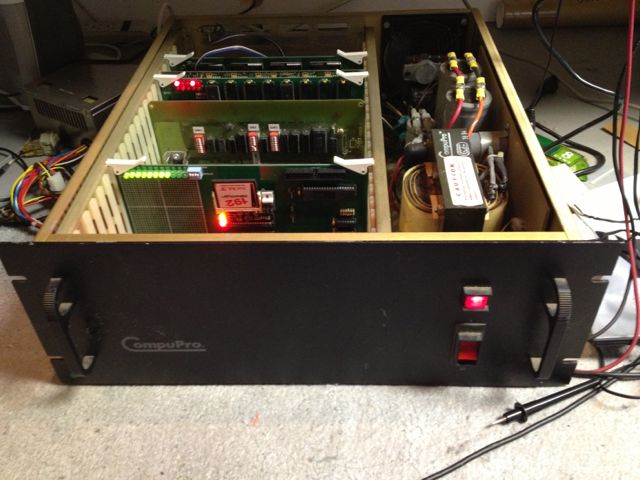5K of memory was fun, but there is a lot of code out there that resides at $2000 and won’t fit in less than 8K, so the next logical step was a larger board. This is not a product yet, but the first pass experimental board seems to be working well. It provides RAM from $0400 to $13FF (4K) and then from $2000 to $FFF7 (56K) for a total of 60K. The KIM monitor runs as it always did, and all interrupt vectors still branch through the existing KIM monitor code.
No, the 128K RAM chip is not vintage, but the other three chips were definitely around in the 1970s. Replace the RAM chip with banks of 2114 and the rest of the logic would still work.
Here it is in the static test jig, sometimes called Kimulator or Kim-Sim:
 And here it is tied into the KIM-1 while a non-stop memory test has been running for a couple days now without a single problem:
And here it is tied into the KIM-1 while a non-stop memory test has been running for a couple days now without a single problem:
 The ribbon cable plugs into the I/O board. In case you wondered what that 10 pin connector was for, this is it.
The ribbon cable plugs into the I/O board. In case you wondered what that 10 pin connector was for, this is it.
So when will this be real? I need to run a couple more experiments to add one more feature, then it’s time to order another set of boards.


